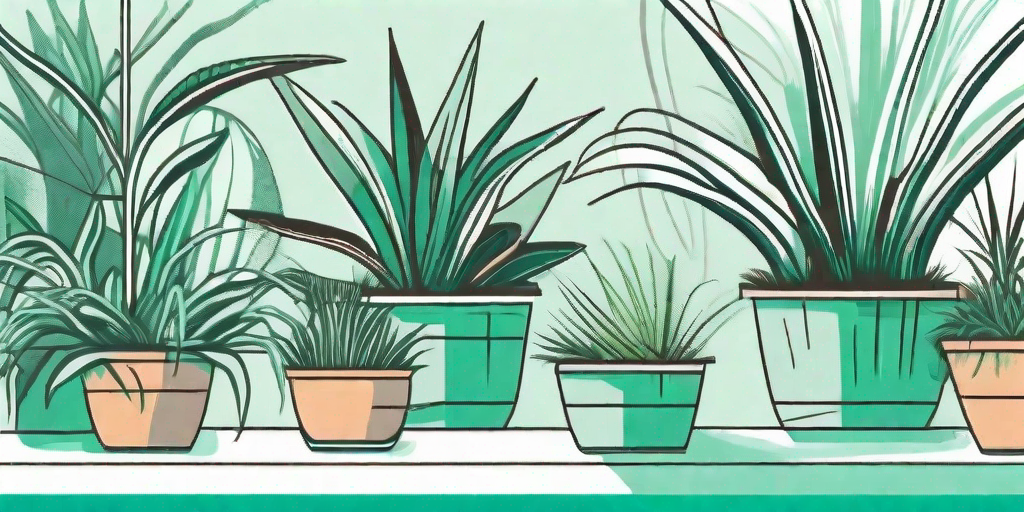
Did you know that the humble spider plant, often relegated to the realm of indoor houseplants, can actually thrive outdoors and add a unique charm to your garden? Yes, you heard it right! This hardy and versatile plant, with its distinctive arching foliage and tiny white flowers, can be a real showstopper in your garden. So, let's get down to the nitty-gritty of how to make your garden the envy of the neighbourhood with the outdoor spider plant.
Understanding the Spider Plant
Before we dive into the how-to, let's take a moment to appreciate the spider plant, scientifically known as Chlorophytum comosum. This plant is a native of tropical and southern Africa but has managed to make itself at home in living rooms and offices around the world. But why limit its potential? Let's set it free in the great outdoors!
Spider plants are known for their hardiness. They can survive in a variety of conditions, making them a perfect choice for both novice and experienced gardeners. Plus, their unique growth pattern, with baby spider plants (or 'spiderettes') dangling from the mother plant like spiders on a web, can add a touch of whimsy to your garden.
Benefits of the Outdoor Spider Plant
Aside from its aesthetic appeal, the spider plant has a lot to offer. It's not just a pretty face, you know!
Firstly, spider plants are excellent air purifiers. They can absorb toxins from the air, making your garden not just a visual delight but a breath of fresh air too. Secondly, they are non-toxic to pets. So, if your furry friends have a habit of nibbling on your plants, the spider plant is a safe choice.
Lastly, spider plants are low maintenance. They don't require constant attention and can survive in less than ideal conditions. Perfect for those of us who don't have a green thumb or simply don't have the time to pamper our plants.
How to Grow Outdoor Spider Plants
Now that we've piqued your interest, let's get down to business. How do you grow these hardy beauties outdoors? It's easier than you might think.
Choosing the Right Spot
Spider plants prefer well-drained soil and partial shade. They can tolerate full sun, but their leaves may become scorched in the hot summer months. So, choose a spot that gets a mix of sun and shade throughout the day.
Also, consider the visual impact of the spider plant's arching growth habit. They can look stunning when planted near a garden edge or in hanging baskets.
Planting and Care
Spider plants can be grown from seeds, but the easiest way to propagate them is from the spiderettes. Simply cut off a spiderette, plant it in a pot with well-draining soil, and wait for it to root. Once it's established, you can transplant it to your garden.
As for care, spider plants are not fussy. They need watering once or twice a week, depending on the weather, and a dose of general-purpose fertilizer once a month during the growing season. That's it!
Common Problems and Solutions
While spider plants are generally trouble-free, they can occasionally face a few problems. But don't worry, we've got solutions for those too.
Brown Leaf Tips
If the tips of your spider plant's leaves are turning brown, it could be due to over-fertilization or fluoride in the water. Try using a fertilizer with a lower concentration of nutrients and water your plants with rainwater or distilled water.
Yellow Leaves
Yellow leaves can be a sign of overwatering. Remember, spider plants prefer their soil to dry out a bit between waterings. So, if your plant's leaves are turning yellow, cut back on the water.
FAQs
- Can spider plants survive winter outdoors?
Spider plants are not frost-tolerant. If you live in a region with harsh winters, it's best to bring your spider plants indoors during the cold months.
- Do spider plants attract spiders?
No, despite their name, spider plants do not attract spiders. The name comes from the plant's spider-like growth habit, not its ability to attract eight-legged critters.
- Can I grow spider plants in pots outdoors?
Absolutely! Spider plants look fantastic in hanging baskets or pots. Just make sure the pot has good drainage to prevent waterlogging.
Conclusion
So, there you have it! All you need to know to unleash the beauty of your garden with the hardy and versatile outdoor spider plant. Whether you're a seasoned gardener or a complete novice, this plant is sure to bring a touch of charm to your outdoor space. So, why not give it a try? Your garden (and your neighbours) will thank you!















